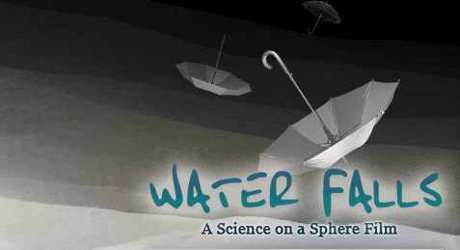NASA Premieres ‘Water Falls’ Film
NASA has created a spherical film showing water’s journey and extensive impact as it cycles through Earth.
“Water Falls,” created in partnership with the Global Precipitation Measurement mission, will premiere this month on spherical movie screens at special events hosted by The Wild Center in Tupper Lake, N.Y., and The Space Foundation in Colorado Springs, Colo.
Shortly afterwards it will be released to more than 100 Science On a Sphere venues worldwide starting Jan. 31, 2014.
[ Also Read: How PwC Preserves the Secrets of Oscars ]
NASA’s Goddard Space Flight Center in Greenbelt, Md., produced the nine-minute film specifically for the Science On a Sphere media platform, a video technology that enables moving images to be wrapped around a 50-pound, hollow, round screen.
The film will play at Goddard’s Visitor Center, located off ICESat Road in Greenbelt, starting on Jan. 31, 2014.
“Water Falls” highlights water’s role on Earth as a precious resource that impacts climate, weather, agriculture, urban sustainability and the natural world.
The film also tells the story of an ambitious space-based research initiative called the Global Precipitation Measurement mission, or GPM.
[ Also Read: NASA to Release Space to Ground Web Series ]
On Feb. 27, 2014, NASA and the Japan Aerospace Exploration Agency will launch the GPM Core Observatory that will provide worldwide precipitation measurements every three hours to help scientists understand how freshwater circulates on Earth.
“The goal of the GPM mission is to better understand the intensity, distribution and amount of rain and snow we have around the world,” said Dalia Kirschbaum, GPM applications scientist and education and public outreach coordinator at Goddard.
“‘Water Falls’ explores the important concepts of freshwater on Earth as being a source of life, a cycle constantly in motion and a cause for disasters.”
[ Also Read: Top 12 Documentary Films Announced in 2013 ]
Through use of animation, data visualizations and videography designed exclusively for playback on spherical screens, “Water Falls” is designed to engage science museum visitors.
Science On a Sphere involves a six-foot-diameter carbon fiber sphere that hangs in the center of a dark theater, surrounded by four projectors.
Connected to a computer system, the projectors cast images on the circular screen to produce one cohesive picture. The audience surrounds the sphere to watch as the film appears to float before their eyes.
Photo courtesy: NASA






